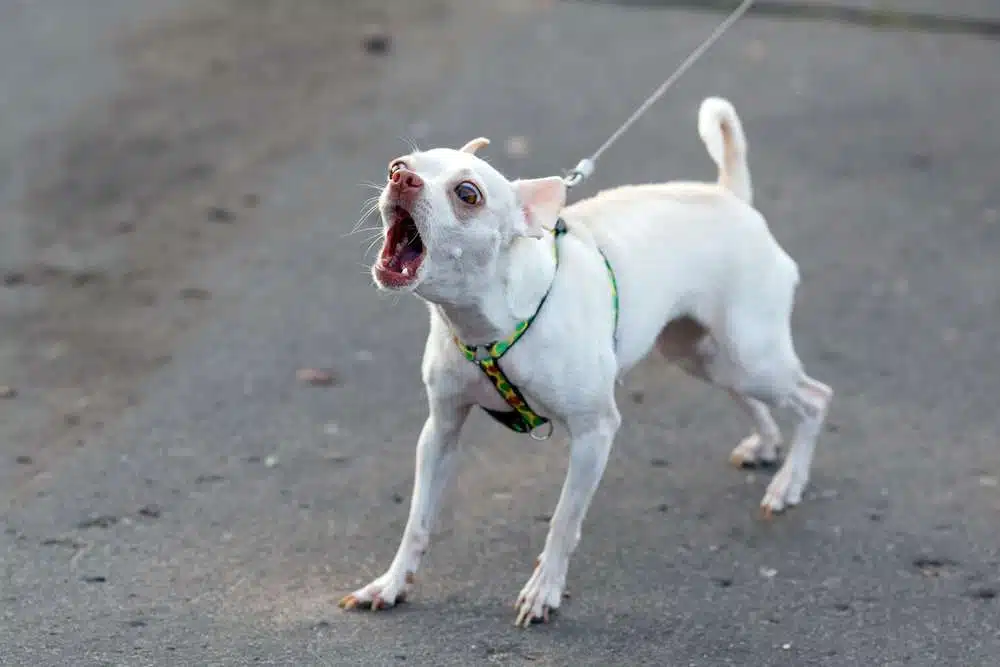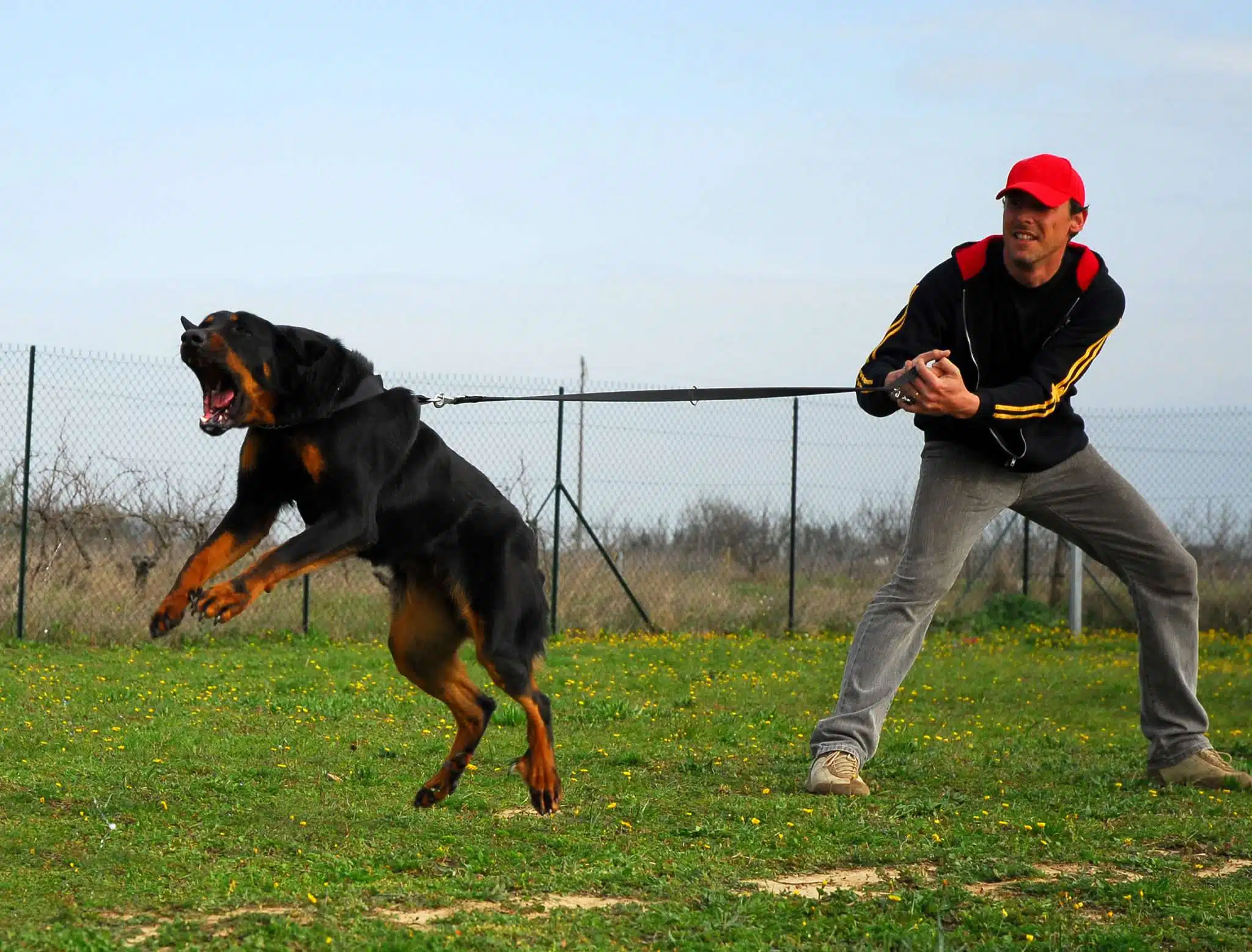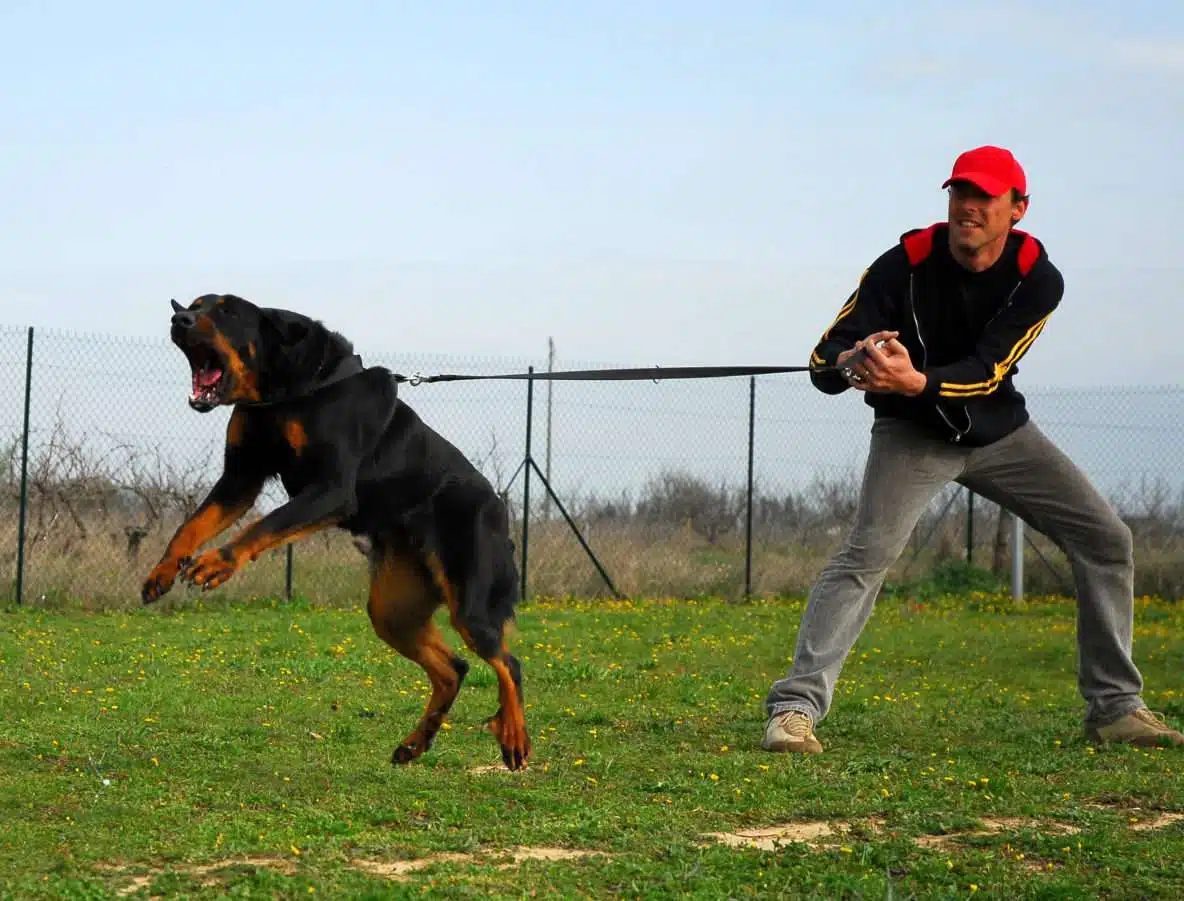Your dog is a sweet and loving animal, always excited to give kisses and meet new people. Off leash, that is. But the moment that leash goes on and you head out for your walk, your mild-mannered pooch is barking, lunging, and growling at any number of perceived threats. And besides being a bit embarrassing, this reactivity can also make walking your dog an anxious chore. Nobody wants that! So what can be done about this common problem? Paws Dog Daycare has some suggestions to help lower that reactivity.

Understand the Source
The first step is to figure out what makes your dog go crazy. Usually, it’s things like other dogs, skateboards or bikes, beards, hooded jackets, etc. Knowing the triggers is the first step to helping your dog move past them.
Also, understand that your dog’s reaction is one of fear and anxiety. Being on a leash creates tension, which already puts your pooch on higher alert. Add in things that look different, make noise, or move fast, and your dog sets off all the alarm bells. Greeting another dog from the front, while tethered, also isn’t how dogs would normally approach each other. Your four-legged friend is feeling uncomfortable and trying to deal with that the best way they know how.
Avoid Punishment
You don’t reassure an anxious human by yelling at them and you don’t correct an anxious or uncomfortable dog by punishing them. Acting angry or harsh only works to affirm your dog’s suspicions that the environment is not safe—escalating the unwanted behaviour. Although it can feel very frustrating to have your dog react to everything, it is important to avoid punishing them.
Reframe the Situation
The key to reducing reactivity is turning your dog’s triggers into positive associations. The most common way to achieve this is with high-value treats and a clicker. Start at a safe distance from one of your dog’s triggers—if your dog is already barking, you’re too close. Once your dog is fully engaged in their undesired behaviours, it’s difficult to bring them back to you, so starting far enough way to still have control is vital.
Wait for your dog to notice the trigger, then give the clicker a click. When your dog looks at you, treat them. If they are too fixated on the trigger, move farther away and try again. Repeat until your dog is reliably looking at you each time you click.
Next, allow your dog to notice a trigger, but wait before you click. Your dog should look at you within a few seconds and, when they do, treat. If your dog does not look at you, go back to the beginning.
Again, repeat the scenario several times before you slowly decrease the distance between your dog and their trigger.

Stay in Control
The more triggers your dog has, the more training they will need. It’s important not to throw everything at your dog at once. Choose quieter locations for training sessions, so you can be in control of the environment as much as possible. You may even engage a friend with their pooch or bike to help you, so you’re not just hoping to encounter the trigger in the wild.
Every walk must be a training session until the behaviour has subsided. Working on it one day and throwing it to the wayside the next will only serve to confuse your dog and prolong progress.
Consider a Pack Walk
One of the reasons we do pack walks with our clients at Paws Dog Daycare is because they work really well to reinforce good behaviour. Walking with a big group of dogs makes your pooch feel like part of a team and makes them far less likely to be reactive. Don’t just borrow a bunch of dogs if you’re not well-versed in dog behaviour, though. Come visit us, instead!
Bring in the Professionals
If you’re not having much success on your own, it’s time to hire a professional dog trainer to help. Professionals can identify where you’re going wrong, giving you concrete advice for how to continue your training at home. Our certified trainers would be happy to consult with you to see how we can help you achieve your desired results!
Walking a reactive dog is no fun at all. But with some focus and intention, you can reduce or eliminate these behaviours. Take back the walk and be the alpha you are with some simple steps and, if you need it, help from our trainers. We’d be honoured to work with you!


One Comment on “Reducing Your Dog’s Leash Reactivity”
HI, really interesting and to the point article. Bucky is being reactive dog to other dogs since the beginning (he is 13 months now), we are really concerned taking into account his weight and strength because he easily can drag us if he wants.
We are seriously considering some help.
Any thoughts?
Camilo